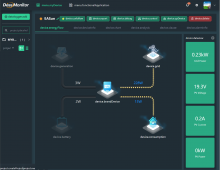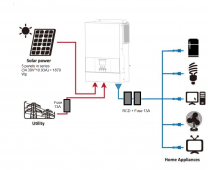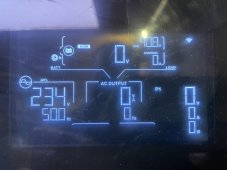Hi all
I've just finished connecting a EASUN SMG II, 3.6KW inverter ( https://easunpower.com/products/eas...vdc-input-batteryless-support-with-wifi-pllug ) to 2 pcs 380 Wp JA-SOLAR panels (34,77V 10,93A).
I don't have any battery connected yet. The Offgrid inverter supports batteryless mode and also bypass via mains.
However I cannot get the inverter to show any "watts" produced by the PV panels. It only powers up when I have it connected to the mains (bypass mode).
I measured the voltage coming from the Panels and it was around 78V.
Now going over the manual I found something I might have misread, it says:
PV Array MPPT Voltage Range 120Vdc~450Vdc under "Charge specifications" (see attached picture from the manual).
At first I thought that would only be relevant to charging batteries, but now I am not so sure, would it minimum PV voltage needed to startup? - Hence I would probably need to add another 2 panels to get it to operate?
I've just finished connecting a EASUN SMG II, 3.6KW inverter ( https://easunpower.com/products/eas...vdc-input-batteryless-support-with-wifi-pllug ) to 2 pcs 380 Wp JA-SOLAR panels (34,77V 10,93A).
I don't have any battery connected yet. The Offgrid inverter supports batteryless mode and also bypass via mains.
However I cannot get the inverter to show any "watts" produced by the PV panels. It only powers up when I have it connected to the mains (bypass mode).
I measured the voltage coming from the Panels and it was around 78V.
Now going over the manual I found something I might have misread, it says:
PV Array MPPT Voltage Range 120Vdc~450Vdc under "Charge specifications" (see attached picture from the manual).
At first I thought that would only be relevant to charging batteries, but now I am not so sure, would it minimum PV voltage needed to startup? - Hence I would probably need to add another 2 panels to get it to operate?









